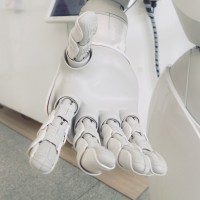Originality is the lifeblood of academia; it is the potent force that drives research, fuels theories, and fosters intellectual growth. In the age of the internet, however, the ease of access to a near-infinite amount of information has opened a pandora’s box of challenges. One of the most pressing of these is plagiarism. Plagiarism, whether intentional or accidental, is a serious academic offense. It’s not just about breaking the rules; it’s about stifling creativity and stunting intellectual growth.
Even when students strive to use a college essay writing service from scratch, they can inadvertently borrow phrases, ideas, or structures without proper attribution. This is where technology, and more specifically, Artificial Intelligence (AI), comes into play. AI has emerged as a powerful tool to counter the plagiarism issue, allowing students to maintain the sanctity of originality while they navigate the sea of information available online.
AI and Plagiarism Detection: The Basics
AI plagiarism detection tools are designed to efficiently scour billions of documents in a short span of time to identify similarities. These tools, powered by complex algorithms, scan your content and compare it against an immense database that includes scholarly articles, books, journals, and web pages. The result? You get a comprehensive report highlighting any potential instances of plagiarism, enabling you to revise and improve your paper accordingly.
But how exactly does AI achieve this? AI algorithms are capable of performing detailed semantic analysis, which means they don’t just look at the words themselves but also understand their context. This enables them to pick up on subtle instances of paraphrasing or idea theft that a simple word-matching search might overlook. They can also identify patterns and anomalies, making them incredibly efficient at pinpointing potentially plagiarized content.
Choosing the Right AI Plagiarism Tool
There’s a myriad of AI plagiarism detection tools available today, each with its unique set of features and strengths. Some popular ones include Turnitin, Grammarly, and Copyscape. While Turnitin is widely used in academic institutions, Grammarly and Copyscape are more accessible to individuals.
When choosing a tool, look for features that suit your specific needs. For example, some tools are better at detecting paraphrased content, while others excel in cross-referencing across multiple languages. Most tools offer a certain degree of feedback and guidance, but some go further, providing detailed explanations about why a specific passage is flagged and offering suggestions to improve it.
How to Use AI Tools to Improve Originality
Using an AI plagiarism checker isn’t just about making sure you don’t get penalized for plagiarism. It’s about using the tool as a learning resource to improve your writing skills and cultivate original thought.
Here’s how to make the most out of it:
- Draft your paper first: Write your paper first without obsessing over plagiarism. Let your thoughts flow freely, and don’t interrupt your creative process with constant checks.
- Run the checker: After you’ve completed your draft, run it through the AI plagiarism tool. Review the results and make a note of the sections that have been flagged.
- Understand and learn: Don’t just mechanically replace or delete flagged sections. Strive to understand why it was flagged and how you can better express your thoughts. Use the feedback provided by the tool to learn about proper citation and paraphrasing techniques.
- Revise and recheck: After making the necessary changes, run your paper through the tool again. It’s all about iterative improvement. Each revision brings you closer to a well-written, original piece.
The Future of AI in Fighting Plagiarism
With AI technology advancing at a rapid pace, the future holds exciting possibilities for plagiarism detection. As AI algorithms become more nuanced, they will be able to better understand context, semantics, and subtle nuances in human language.
We can expect to see AI tools that not only detect plagiarism but also provide more detailed feedback on writing style, logic flow, and argument structure. The integration of AI with other technologies, such as Natural Language Processing (NLP), could lead to even more sophisticated plagiarism checkers. These advancements will further bolster the integrity of academia, fostering a culture of creativity and originality.

Final Thoughts: Striving for Originality with AI
In the vast world of information, maintaining originality can feel like an uphill battle. However, with the right AI tools at your disposal, you can navigate this terrain with confidence, using technology not just as a plagiarism detector but as a guide to hone your writing skills and develop your unique voice.
As students, it is our responsibility to uphold the values of academia and contribute to the vibrant tapestry of knowledge. With AI, we can ensure we do this with integrity. Remember, the goal is not just to write papers that pass the plagiarism check but to foster a mindset of originality and innovation.
Moreover, AI tools can even guide us toward the best paper writing services available, allowing us to learn from professional writers, understand their techniques, and apply them in our academic journey. After all, boosting originality isn’t just about avoiding plagiarism; it’s about embracing the power of original thought and making a meaningful contribution to the world of knowledge.





